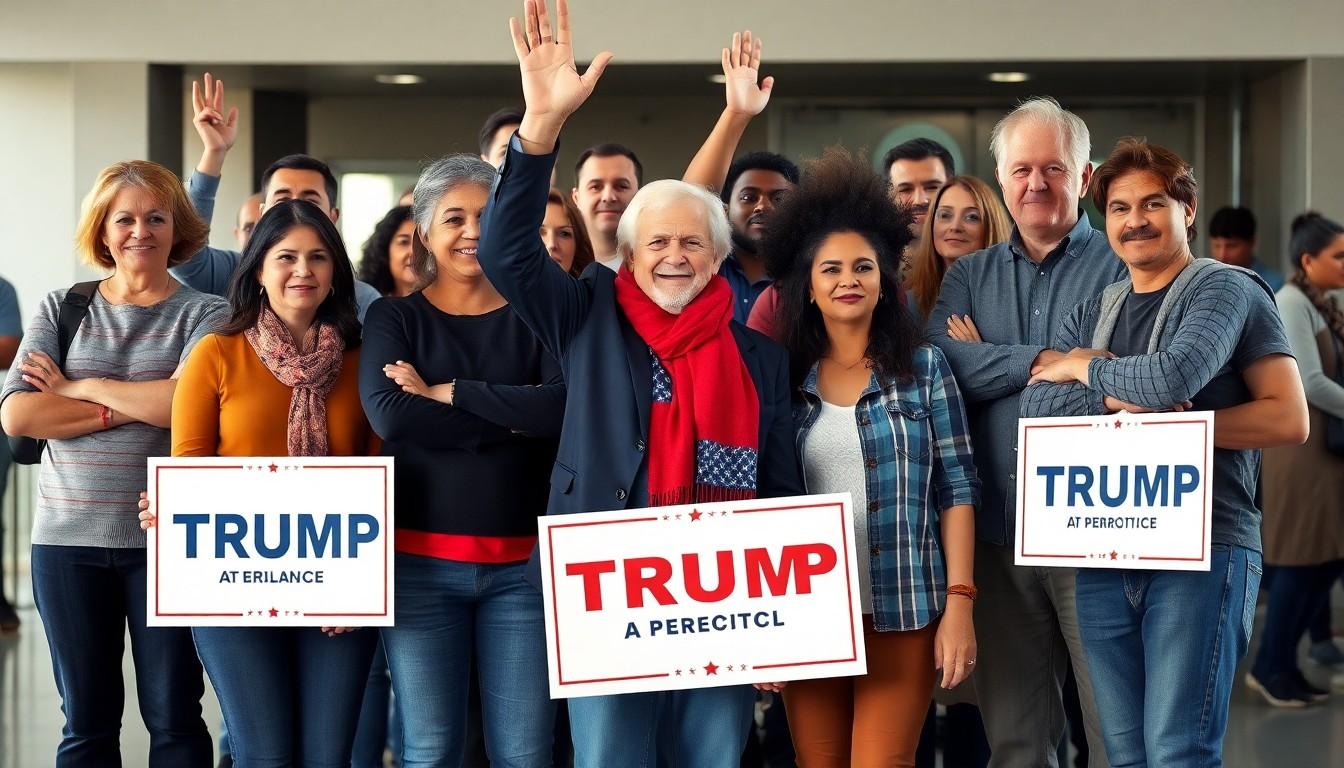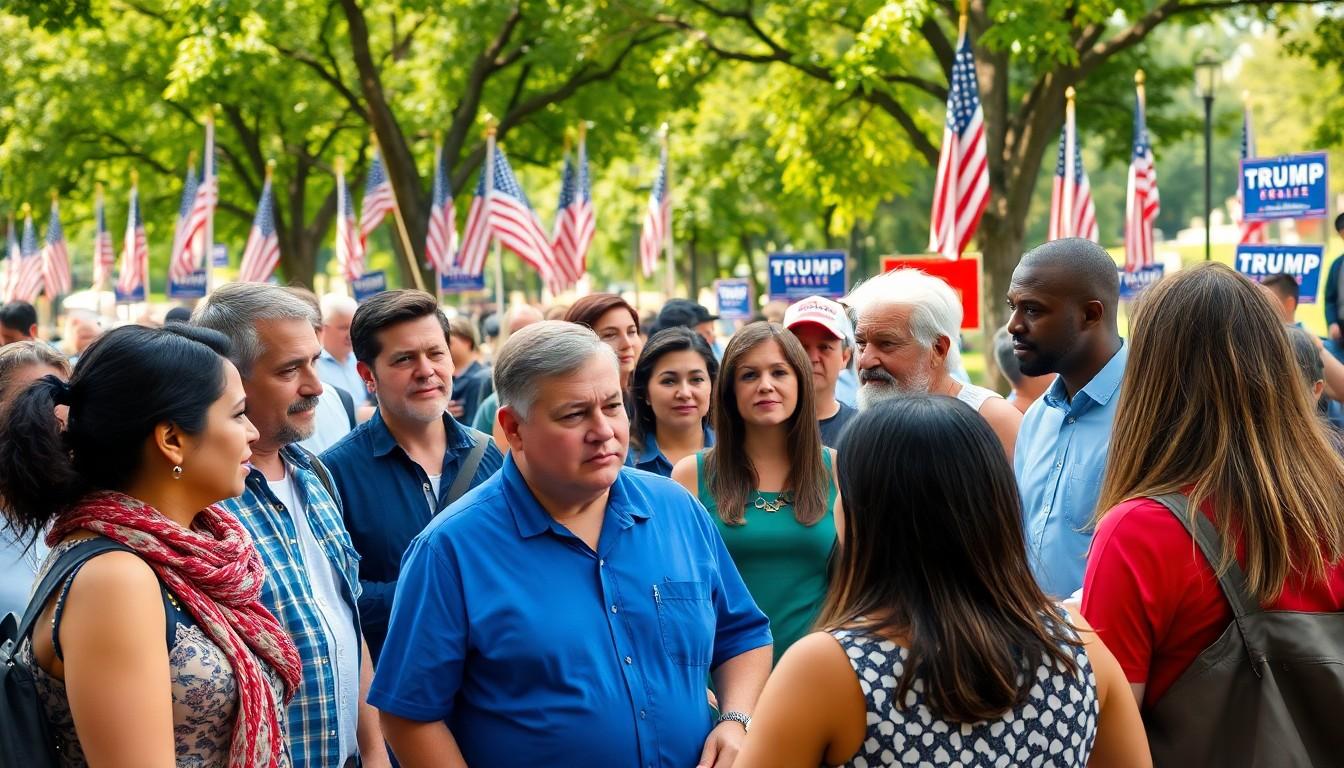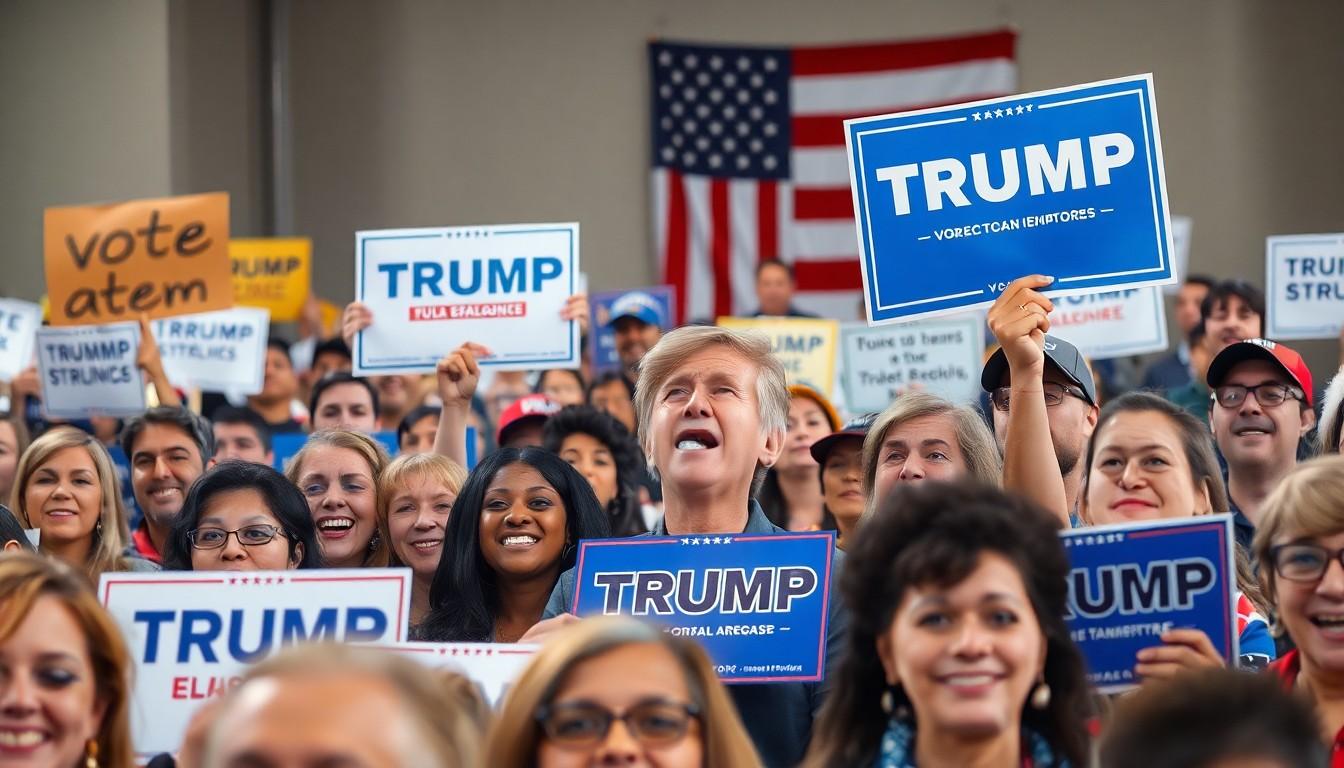Phone:
(701)814-6992
Physical address:
6296 Donnelly Plaza
Ratkeville, Bahamas.

Public opinion on Donald Trump is like a rollercoaster ride—full of ups, downs, and unexpected twists that leave everyone dizzy. Love him or hate him, Trump has a knack for stirring the pot and igniting passionate debates. Whether he’s tweeting at 3 AM or making headlines with his latest rally, the reactions are always entertaining, if not downright bewildering.
Public opinion on Donald Trump displays significant volatility, reflecting diverse viewpoints across the political spectrum. Recent surveys indicate that his approval ratings fluctuate frequently, often influenced by key events or statements. In one poll, 43% of participants expressed a favorable view of Trump, while 52% maintained an unfavorable stance. This divide underscores the polarized nature of his support.
Reactions to Trump’s policies generate strong conversations. Some supporters praise his economic initiatives, citing tax reforms and employment growth. Critics, on the other hand, highlight concerns over immigration policies and social justice issues. Data shows that nearly 60% of respondents remain skeptical about his handling of racial matters.
Trump’s communication methods, particularly via social media, play a crucial role in shaping public perception. His tweets often spark intense discussions, drawing comments from both advocates and detractors alike. Notably, 70% of respondents feel his online presence has a significant influence on public opinion.
State-by-state approval ratings reveal additional insights. In states like North Dakota and West Virginia, Trump’s approval remains robust, often exceeding 60%. Conversely, states such as California show lower support, with approval ratings around 30%. Demographic factors, including age and education, also contribute to varying sentiments about Trump.
Polling data consistently shows that public opinion shifts with media coverage and political events. Events like impeachment inquiries and high-profile court cases can sway perspectives dramatically. Amid this dynamic landscape, Trump’s capacity to galvanize attention and foster passionate responses is evident.

Public opinion on Donald Trump has evolved significantly, shaped by various key moments and personal actions. Understanding this historical context provides insight into the current fluctuating views.
Trump emerged as a prominent figure in the political landscape during the 2016 presidential campaign. His unconventional style and bold rhetoric attracted attention, creating a distinct persona that resonated with certain voter demographics. Many supporters viewed him as a refreshing alternative to traditional politicians. His focus on issues like immigration and trade appealed to those feeling left behind by the political establishment. Consequently, Trump’s celebrity status and business background contributed to his initial surge in popularity, laying the groundwork for ongoing debates around his public image.

Several pivotal events influenced public perception of Trump during and after his presidency. The release of his tax returns prompted scrutiny, revealing details that divided opinions among voters. Additionally, handling the COVID-19 pandemic drew significant criticism, as many Americans questioned his strategies and communication. Notably, the violence during the Capitol riots on January 6, 2021, further polarized opinions, altering how various groups viewed Trump’s leadership. His decisions on major issues, like immigration policies and climate change, consistently triggered strong reactions. Polls indicate that such events often correlate with substantial shifts in approval ratings, emphasizing their lasting impact on public opinion.
Public opinion on Donald Trump shows significant variability, driven by numerous factors such as current events and individual statements.
Approval ratings reflect the electorate’s fluctuating sentiments. Recent surveys reveal that 43% of respondents view Trump favorably, while 52% express disapproval. In polarized political climates, these numbers illustrate the stark divide among supporters and critics. Recent polls also highlight strong backing in states like North Dakota and West Virginia, contrasting with California’s approval ratings hovering around 30%. Such regional differences underscore the diverse attitudes toward Trump across the country.
Changes in polling trends provide deeper insights into public perception. Over time, Trump’s approval ratings have experienced sharp ups and downs, especially following significant events like the COVID-19 pandemic and the Capitol riots. Frequent media coverage often correlates with these fluctuations, altering how various demographic groups view Trump. Notably, reactions vary, with certain demographics remaining steadfast in their support while others exhibit growing skepticism about his leadership. The ongoing analysis of these trends reveals a complex landscape of opinion shaped by a multitude of influences.
Public opinion on Trump is shaped by various factors that interact within the political landscape.
Media coverage significantly impacts how individuals perceive Trump. Positive and negative portrayals can sway public sentiments, with headlines often framing discussions around his policies. Reports on Trump’s rallies and speeches enhance visibility, spurring both support and opposition. Polling indicates that 60% of people believe mainstream media coverage directly influences opinions about his presidency. Moreover, coverage of controversies or achievements often results in immediate shifts in approval ratings. Critical narratives tend to reinforce opposition, while favorable stories galvanize support. The overall tone of media reports plays a vital role in shaping public discourse.
Trump’s use of social media has transformed public engagement. Approximately 70% of respondents feel Trump’s online presence matters in shaping opinions. Platforms like Twitter and Facebook facilitate direct communication with his supporters. Rapid dissemination of information enables real-time reactions to his statements and policies. For many, social media serves as a primary news source, allowing them to engage with differing viewpoints. While many supporters find inspiration in his posts, critics often amplify their concerns through these channels. This dynamic creates a polarized environment, with each post capable of igniting widespread debate.
Economic conditions also influence public sentiment toward Trump. Surveys reveal that 67% of individuals cite economic performance as a critical factor in their approval ratings. During periods of economic growth, Trump’s approval ratings tend to rise, while downturns correlate with declines. His administration’s focus on tax cuts and job creation resonates with many supporters. Conversely, economic challenges heighten scrutiny of his policies, leading to increased skepticism. Voter demographics, influenced by personal financial situations, play a role in shaping opinions. Economic indicators, such as unemployment rates, directly impact public perception, illustrating the connection between economic health and political approval.
Public opinion on Trump exhibits substantial regional variations, especially when distinguishing between urban and rural settings.
Urban populations often show lower approval ratings for Trump compared to their rural counterparts. In urban areas, around 30% express a favorable opinion, highlighting skepticism towards his policies on social issues. Conversely, rural respondents typically demonstrate stronger support, with approximately 60% favoring his economic initiatives. Diverse demographics contribute to this divide, as younger urban voters frequently prioritize social justice, while older rural residents tend to focus on job creation and economic growth. Such contrasting viewpoints underscore the complexities of public sentiment in different geographic areas.
Swing states play a crucial role in shaping overall public opinion on Trump. States like Pennsylvania and Michigan reflect mixed approval ratings, showing about 45% favorability among residents. Conversely, states such as Florida and North Carolina showcase varied perspectives, with approval ratings fluctuating between 50% and 55%. Critical issues influence opinions heavily in these regions, particularly economic performance and Trump’s handling of the pandemic, which resonate differently across voter demographics. This variability significantly impacts campaign strategies, making these states pivotal during elections.
Public opinion on Donald Trump remains a complex and ever-changing landscape. The stark divide in approval ratings illustrates how deeply polarized sentiments are across the nation. Factors like media coverage and social media engagement significantly shape perceptions, influencing how different demographics respond to Trump’s leadership.
As events unfold and new issues arise, public opinion will likely continue to evolve. Understanding these dynamics is essential for grasping the broader implications of Trump’s presidency and its impact on future political discourse. The ongoing dialogue surrounding Trump will undoubtedly remain a focal point in American politics, reflecting the diverse views of the electorate.